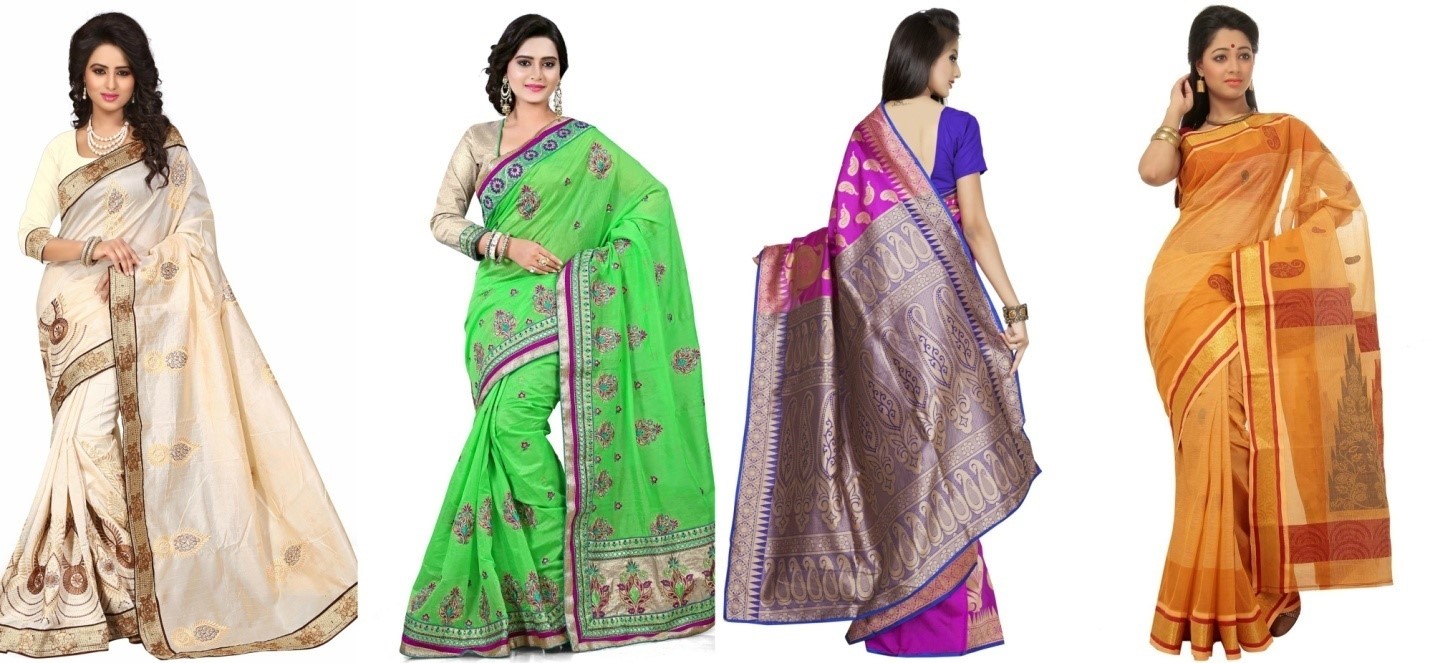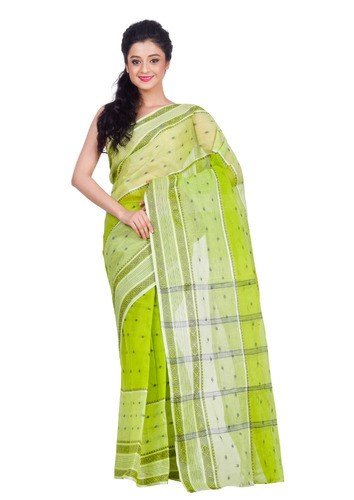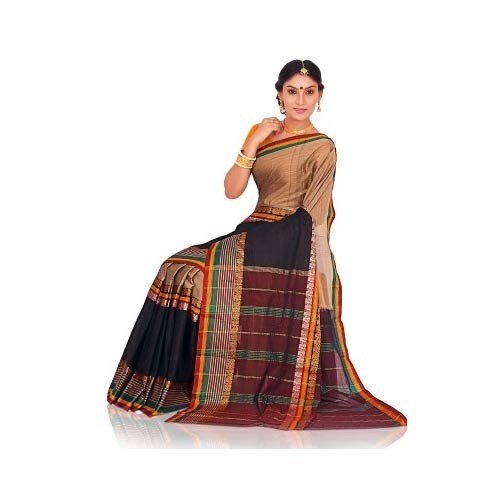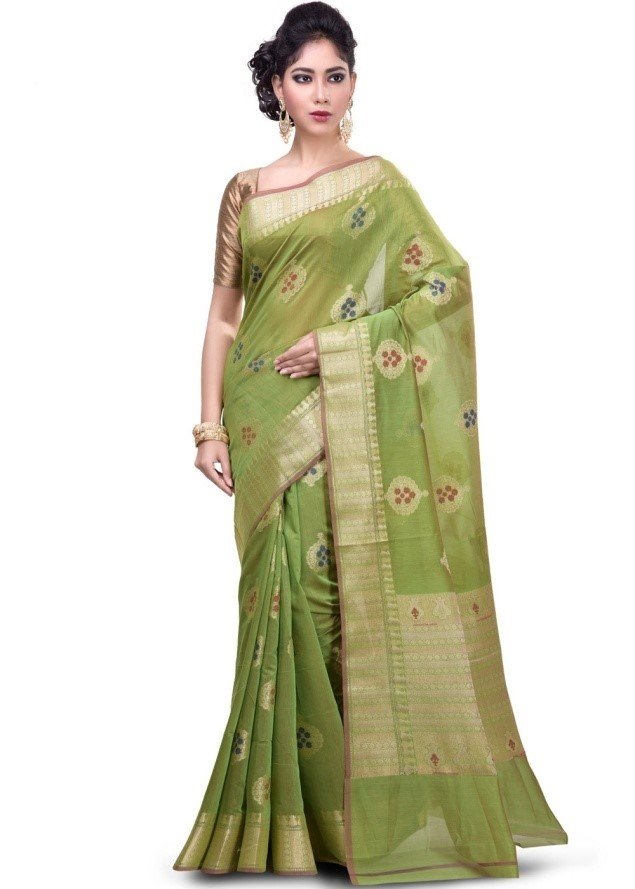Saree is worn by women living in India, Nepal, Bangladesh and Sri Lanka. It is loved, equally, by housewives as well as by professionals. The beauty and elegance embodied by a saree are incomparable and unparalleled. Every woman looks beautiful and it adds to their feminity on wearing even a simple saree.
Saree is non-stitched five to nine meters of cloth draped in many styles. The basic style to drape is wrapping it around the waist by one corner and then throwing back the other side over shoulder going midriff with part of the clothing hanging behind called pallu. This style of wrapping a saree is followed by the majority of Indian women but different regions of India have their own tradition and culture of wrapping it in different styles. Every style is different, but carries extremely fine and elegant culture of India. It is wrapped over a petticoat and teamed up with a blouse.
The history of draping a saree is not modern or medieval, but its origin can be traced back to ancient times of Indus Valley Civilization. The artifacts and historical things found at the site indicated about the lifestyle of people living at that time. Therefore, materials found also tell the women’s lifestyle and their clothing of the time. Women of that period also used to drape sarees of cotton and the way they used to drape this cloth was also more or less same. This fact, actually, brings more respect and interest towards sarees and therefore the people have carried forward this tradition since that period.
There are multiple ways a saree can be wrapped by a woman. To name a few Nivi (basic style), Gujarati style, Maharashtrian style (kache), Dravidian style of south India, Gond draping (tribal culture) teach different styles of draping a saree. These different styles of draping a saree are not the only basic way of living by a woman, but also have cultural and traditional significance. The pallu of saree can be used to wipe wet face while working or can be taken overhead while working under the sun. These are the logical functions and benefits of draping a saree.
If you also want to include saree in your wardrobe collection and involve in the traditional wave, then shop at a physical store or visit an online shopping site to purchase a saree for yourself. The Style Caret is one such shopping site where you will find all the latest as well as regional specific sarees at a reasonable rate.
Till now the history and traditional aspects of saree were discussed. Let’s discuss some regional styles of saree and their different fabrics.
1. Kanjeevaram sarees
Kanjeevaram sarees are from the state of Tamil Nadu and traditionally woven by the people of Kanjeevaram in silk fabric of the region. It is the specialty of the place and it is known for the elegance and fine texture of the fabric. It is expensive because of the traditional methods used and silk threads and is loved by women all over the world and every part of India especially.
2. Taant Sarees
Taant sarees are a speciality of Bengal and are cotton sarees. The small prints on the base of the saree and wide borders give it a distinct look. The fine texture coming out of traditional weaving makes it light and easy to wear daily. This is the pride of Bengali women and if you want also want to purchase it, then visit stylecaret online shopping site.
3. Sambalpuri sarees
These sarees are a specialty of Odisha and are known for their delicate and complex weaving style. The difficult hand weaving is done to bring the delicate and fine designs. The threads are dyed before weaving which ensures that the colors of saree remain as fresh as the time of purchasing. As a token of remembrance, these sarees are best to gift or to own as the color of saree will never fade and the person (whom you gifted) will never forget you.
4. Muga Sarees
Muga silk from Assam state are the one major type of silk produced in India with larvae of caterpillars feeding only on two specific types of leaves. The golden thread of silk, which can only be found in Assam Muga silk is glossy and gives sarees special look.
5. Banarasi sarees
Banarasi sarees are a specialty of Varanasi city and are famous for its gold and silver zari work. These sarees are best for marriage functions and are loved by women all over India. The intricate detailing by zari threads takes a long time to make one saree and that what makes it an expensive one. In the past, these sarees were made for royal families and gold and silver threads were used for the designs. A single Banarasi saree could even take one year to be completed.
6. Lehariya sarees
Women loving light sarees go for Lehariya sarees. This saree is the specialty of Rajasthan which is made from the special technique of tie and dye process. The cloth is tied in a special way and then is dyed properly. The pattern that comes out after this process has slant vertical lines on saree base. Unlike other sarees, the border is ignored part of this style and the whole focus lies at the base of the saree. Ladies especially youth loves to wear this which is youthful and light to manage.
7. Chanderi sarees
These sarees are very light and have a special kind of sheen on the base. These sarees are the specialty of Madhya Pradesh. The bright colors of sarees are best for any occasion and can uplift your mood for sure. The fabric is the combination of silk, cotton and zari work which brings out a very feathery fabric loved by women who are fussy about wearing sarees.
There are many other types of regional sarees in India and is the pride of every state and region.









